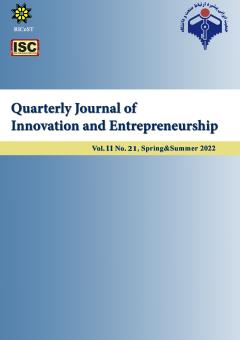The effect of firm capabilities on the innovative Performance of Iranian knowledge-based Firms
Subject Areas : Special
Javad Soltanzadeh
1
![]() ,
Esmaeil Ghaderifar
2
,
Esmaeil Ghaderifar
2
![]() ,
Hojat Rezaei Soufi
3
,
Hojat Rezaei Soufi
3
1 - Assistant Professor, Faculty of Economic and Administrative Sciences, Mazandaran University, Mazandaran, Iran
2 - PhD in Technology Management, Allameh Tabatabai University, Tehran, Iran
3 - Doctor of Industrial Engineering, Amirkabir University of Technology, Tehran, Iran
Keywords: Innovation, Innovation Capabilities, Innovative Performance, Knowledge-based Firm,
Abstract :
Firms try to increase their innovative performance to survive in a turbulent market and improve their competitive position. Combining these efforts does not necessarily lead to profit and increase their market share. To understand this shortcoming, researchers look at the factors that affect innovation performance and how to measure it. However, the subject that needs to be addressed is the firm's innovative behavior, which can affect innovation performance. By borrowing from the concept of dynamic capabilities, the present study has tried to classify the possible types of capabilities to create new products, services, and processes into three general categories: innovation capabilities, collaboration-based capabilities, and complementary capabilities, and by presenting different hypotheses for the effectiveness of these capabilities. Test the firm in innovative performance. For this purpose,180 questionnaires were distributed among firms to report the number of new products/services, the number of new processes, their financial performance, and the types of measures taken in their field of innovation from 1392 to 1394. After confirming their validity and reliability and creating structural equations using the partial least squares (PLS) method, results showed that innovation capabilities and collaboration-based capabilities significantly positively affect innovation performance. Also, research and development, training of human resources, design, collaborative research and development, and purchase of technical knowledge have significant path coefficients in the resulting PLS model and significantly affect innovation. In addition, the purchase of machinery and tools only significantly affects the creation of innovation.


